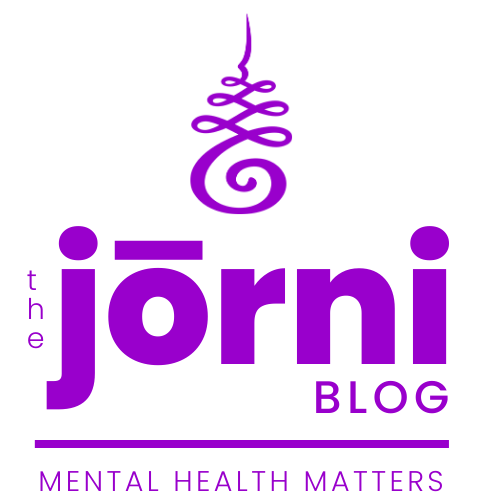When Success Becomes Unsustainable
Burnout often arrives quietly and without obvious warning signs. Many of us continue performing at a high level, consistently meeting deadlines, and showing up polished and capable. Yet, beneath that successful exterior, something begins to unravel. This unraveling often occurs subtly, and it may take us a long time to recognize exactly what we have lost. We lose more than energy and enthusiasm. Over time, burnout quietly erodes our sense of joy, our connection with others, and our capacity to remain genuinely engaged in our lives. By the time we finally notice, burnout has often deeply impacted our bodies and our spirits.
The moment of clarity often arrives quietly, perhaps as a subtle realization during a routine meeting that we can no longer stay fully present. It may appear during a vacation that offers no sense of renewal. It might simply be a quiet but persistent feeling that our successful, carefully constructed lives no longer feel aligned. This quieter form of burnout doesn't always lead to shutdown, but it creates a steady ache rooted in disconnection from ourselves. It can feel especially difficult to talk about because outwardly, everything appears fine.
This blog explores what it takes to leave this kind of unsustainable success behind. Instead of a carefully crafted plan, recovery often begins with small acts of pausing and listening, allowing space to reconnect with deeper parts of ourselves. We follow the journey of someone who left behind a high-pressure corporate career to find something more grounded. What emerged was a deeper healing, accompanied by a new definition of success rooted in self-awareness, nervous system regulation, and a slower, more balanced way of living.
Walking Away to Come Home
Maddison Sutton is a Certified Integrative Health Coach and Functional Diagnostic Nutrition Practitioner who knows firsthand what it means to rebuild from burnout. After years of climbing the corporate ladder, she reached a breaking point that couldn’t be ignored. That breaking point became a doorway—to deeper healing, nervous system restoration, and a more honest relationship with work, health, and purpose. Maddison didn’t just walk away from a fast-paced career. She walked toward something more rooted, more human, and more sustainable.

Today, Maddison supports high-achieving women who are ready to trade survival mode for something more spacious. Through her integrative approach—blending holistic wellness, mindset work, and nervous system education—she helps others reconnect with the parts of themselves they had to silence to succeed. Her work is grounded, real, and deeply personal. Because she’s lived the burnout. And she’s learned how to come home to herself on the other side.
The High Cost of Pushing Through
It becomes easy to normalize overwork when everyone around us seems equally exhausted. We receive praise for arriving early and staying late. Exhaustion becomes symbolic of dedication. Yet, beneath that relentless drive, something inside us quietly breaks down. Our bodies, relationships, and inner alignment all begin to suffer beneath the constant pressure to perform.
Numb But Functional
Burnout often begins quietly, showing up first as a subtle sense of numbness that gradually deepens over time. We find ourselves disengaged from experiences that used to bring us joy. Conversations no longer hold our full attention. Although we continue functioning outwardly, our inner creativity and presence gradually fade away. This numbness happens when our nervous system tries to keep us safe, shielding us from feeling overwhelmed.
Chronic Dysregulation in Disguise
For many of us who are high achievers, burnout manifests as chronic nervous system dysregulation. Our bodies remain in a fight-or-flight state, even when immediate stressors are gone. Activities like meditation or yoga might not bring relief because deep down, our bodies don't feel safe enough to truly rest. Until we help our nervous systems feel secure again, genuine relaxation stays just beyond our reach.

When Productivity Becomes a Shield
Staying constantly busy often helps us avoid uncomfortable feelings underneath. It keeps us from noticing unhappiness or questioning whether we're truly fulfilled. But eventually, even constant productivity stops working, and we're left facing exactly what we've been trying so hard to avoid. At that point, moving forward means getting honest about how we really feel.
The Body Keeps the Score
When we keep pushing ourselves too hard, our bodies eventually start speaking up. We might notice trouble sleeping, ongoing digestive problems, chronic pain, or hormonal changes. These signals are our body's way of asking us to slow down. Often, though, we overlook them until we're forced to rest. Learning to recognize these signs earlier helps us find real balance again.
Leaving Without a Roadmap
Stepping away from burnout rarely unfolds neatly or predictably. Often, we don't choose to leave our high-pressure lives because of clarity, but rather out of necessity. In the story we follow here, our guest left a corporate role not because she had certainty about her next steps, but because her body gave her no choice. During this forced pause, she began forming a new path forward.
Choosing to walk away brings up understandable fears around identity, financial stability, and professional credibility. Yet it also offers an opportunity to rediscover ourselves. When constant stress recedes, we can finally ask, perhaps for the first time in years, what we truly need to feel whole again.

Clarity comes slowly, often emerging through rest, support, and reconnecting with ourselves. We may need to step back significantly to see what parts of our lives were fundamentally unsustainable. From that realization, we can begin building something more balanced and authentic.
Relearning Regulation
Healing burnout goes beyond rearranging our schedules. It involves tuning into how stress has affected our bodies and learning what we need to truly settle and relax again. After years of running in constant overdrive, genuine rest can feel out of reach. Recovering from this takes deeper, gentler support. It’s not just managing our time, but rebuilding how we feel from the inside out.
Noticing Before the Spiral
Learning to recognize early signs of nervous system dysregulation becomes critical. Symptoms such as irritability, obsessive planning, racing thoughts, or physical tension offer valuable cues. By noticing these signals early, we can intervene compassionately, slowing down and taking intentional steps toward calming ourselves.
Building Safety From the Inside Out
Achieving true balance requires that our bodies experience safety again. Real safety emerges gradually through small, repeated actions that reassure our nervous systems. These might include gentle movement, trauma-informed practices, or somatic nervous system exercises. The specific approach matters less than consistently communicating safety to our bodies.

Redefining What Productivity Means
When nervous system regulation becomes central, our understanding of productivity naturally changes. Instead of measuring success by how much we accomplish, we start prioritizing how grounded we feel as we work. Sustainable productivity means achieving in ways that keep us connected to ourselves, instead of losing ourselves in the process.
Healing in Relationship
Balance doesn't develop in isolation. Safe relationships significantly support our healing, offering co-regulation and emotional safety. Supportive therapists, coaches, friends, or partners help us feel seen and validated. Knowing we don't have to heal alone often becomes an essential component of genuine recovery from burnout.
The Edges of Enough
Burnout forces us to reconsider long-held beliefs about worthiness. Many of us learn early that our value is tied to output and that rest must be earned. Such beliefs run deep, reinforced by environments celebrating exhaustion as commitment.

Unlearning these messages takes time. It involves letting go of past identities defined by constant productivity and endurance. We may grieve this previous version of ourselves. Yet, we also recognize we don't have to return to it.
In its place, we cultivate a new understanding of self-worth independent from achievements or exhaustion. This version affirms our inherent value and grants permission for rest and authenticity. Such awareness becomes foundational for the healthier lives we build next.
Practicing a Different Pace
Recovering from burnout invites us to carefully examine the pace we’ve maintained and the hidden costs we've quietly paid over time. Restoring our rhythm involves more than temporarily stepping back. Instead, it requires cultivating a new way of living centered around regulation and presence rather than performance. These changes begin subtly, through intentional decisions that honor our limits and respond with kindness instead of pushing through exhaustion.
Rebuilding Through Routine
Creating a more sustainable pace means embracing routines that actively support rest and nourishment. This approach focuses on choosing intentional habits that support us, rather than relying on strict schedules. Morning routines become regulating rituals rather than launching pads for productivity. Workdays now include breaks that we treat as essential rather than optional. Our evenings finish with calming practices instead of constant activity. These habits form the essential framework for building a stable, sustainable life free from constant strain.

Learning to Pause Without Guilt
Many of us have learned to associate rest with guilt. Pausing often triggers fears of falling behind or letting others down. Yet rest doesn't equate to abandoning responsibilities. Rather, it is how we reconnect with our inner selves. Learning to pause without feeling obligated to justify or apologize is fundamental to overcoming burnout and establishing genuine balance.
Making Space for Joy Again
Slowing down also serves another important purpose. It creates room for joy, something many of us have lost along the way. Joy plays an essential role in helping us heal from chronic stress. Reclaiming joy might look like engaging in activities we genuinely love or spending time with people who make no demands on us. Genuine joy emerges naturally when we allow ourselves space and freedom to simply be present, signalling that something important is healing deep within.
The TAKEAWAY
Burnout does not always manifest as an obvious breakdown. Often, it appears quietly as a gradual loss of connection with ourselves and our lives. We continue pushing forward because we have become accustomed to constant productivity. Over time, this persistent drive creates emotional numbness. Eventually, even the most resilient among us recognize we have reached our limit, prompting us to make meaningful changes.

Recognizing burnout does not require us to abandon everything we've built. Instead, it invites us to reconnect thoughtfully with what truly matters. Recovery occurs gradually, one intentional choice at a time. It involves setting new boundaries, honoring our needs, and prioritizing the health of our nervous system. True healing is less about perfection and more about mindful presence, consistently choosing self-awareness and care.
Ultimately, this story reminds us rest is not something we must earn. Walking away from burnout signifies strength and awareness rather than failure. Success achieved through relentless self-sacrifice exacts too high a price. By acknowledging this reality, we can choose a different, healthier path.


